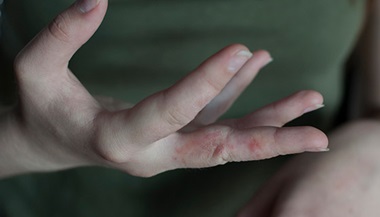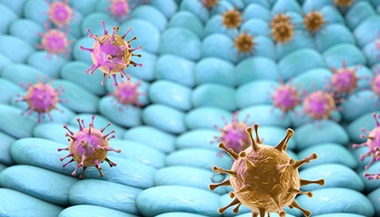Chagas Disease
What is Chagas disease?
Chagas disease is a disease caused by the parasite Trypanosoma cruzi. It is named for Carlos Chagas, the Brazilian doctor who first identified the disease in 1909.
What causes Chagas disease?
When people become infected by the parasite Trypanosoma cruzi, they can get Chagas disease. The feces of insects called triatomine, or “kissing” bugs, transmits the parasite to humans. These bugs feed on the blood of animals and humans at night, and then they defecate. Infection can occur if you unknowingly wipe the feces into your eyes, nose, mouth, or a sore.
The insects are usually found in rural Latin America, in places of widespread poverty. Experts believe that as many as 11 million people in South and Central America and Mexico have the disease. Most don’t know they have it. The disease will not go away without treatment and can eventually lead to death. People in North America are also infected, but in much smaller numbers. However, the disease is spreading as people travel more widely.
In addition to contact with feces from infected bugs, the following can also cause Chagas disease:
- Blood transfusion
- Organ transplant
- Birth (mother-to-baby)
- Exposure in the lab
- Eating uncooked food contaminated with feces from infected bugs
You can’t get Chagas disease from another person, the way you can get a cold or the flu from someone else. You have to be exposed to the bug feces yourself. However, you could get the disease if you receive blood, or an organ from a family member or anyone else with the infection.
What are the risk factors for Chagas disease?
You’re most at risk for Chagas disease if you:
- Have visited or traveled in rural Central or South America
- Have been exposed to the blood products, or received organs, from someone infected with Chagas disease
What are the symptoms of Chagas disease?
Symptoms of Chagas disease vary and might be hard to distinguish from another illness. In some people, symptoms may be mild at first and then disappear for years or even decades. In the chronic phase of the disease, the parasite gets inside your heart muscle. This is why later symptoms often involve the heart.
Symptoms of Chagas disease in the acute phase (the first few weeks or months) are:
- Mild flu-like symptoms, such as fever, fatigue, body aches, and headaches
- Rash
- Loss of appetite
- Diarrhea
- Vomiting
- Swelling or a sore near the eye or on the side of the face where the bite or infection occurred (visible in fewer than half of infected people)
- Enlarged glands
Symptoms of Chagas disease in the chronic (or long-term) phase may include:
- Heart failure
- Abnormal heart rhythm
- Trouble eating
- Trouble passing stool
The symptoms of Chagas disease may look like other medical conditions or problems. Always see your healthcare provider for a diagnosis.
How is Chagas disease diagnosed?
To diagnose the condition, your healthcare provider will consider:
- Your overall health and medical history
- Your description of symptoms
- Your travel history (because Chagas is often, though not always, caught in Central or South America)
- A physical exam
- Lab blood tests
- Heart function tests, such as an electrocardiogram (ECG) once Chagas is confirmed
How is Chagas disease treated?
Your healthcare provider will figure out the best treatment based on:
- How old you are
- Your overall health and medical history
- How sick you are
- How well you can handle specific medicines, procedures, or therapies
- How long the condition is expected to last
- Your opinion or preference
Early treatment for Chagas disease is the most successful. Recommended treatment may include:
- Antiparasitic medicine which you may need to take for up to 2 months
- Continued monitoring of your heart function
- Treatment of complications, such as arrhythmia
If you have a weak immune system, such as from HIV or cancer, you may need additional treatment. Chagas disease can be more severe in people with these conditions and may lead to earlier death.
What are the complications of Chagas disease?
If you have Chagas disease, you have about a 30% chance of developing complications.
Complications include:
- Infected heart muscle (myocarditis)
- Brain infection (meningoencephalitis)
- Enlarged heart
- Enlarged esophagus
- Enlarged colon
- Death
Can Chagas disease be prevented?
If you are planning to visit rural areas in Central or South America, choose clean, well-built lodgings. Ask about pest management where you are staying. Consider using bed nets, wearing long sleeves and pants, and using bug repellent day and night.
When should I call my healthcare provider?
Chagas disease is not an emergency. However, its effect on the heart and intestines might lead to an emergency. Seek immediate medical attention if you experience signs of heart failure, such as shortness of breath, ongoing cough, tiredness, confusion, and rapid heart rate, especially if you have recently been to Central or South America.
Key points
- Chagas disease is a disease caused by the parasite Trypanosoma cruzi.
- You’re most at risk for Chagas disease if you have visited or traveled in rural Central or South America or been exposed to the blood products, or received organs, from someone infected with Chagas disease.
- The symptoms may be mild at first and then disappear for years or even decades.
- In the chronic phase of the disease, the parasite gets inside your heart muscle or intestine.
- If you have Chagas disease, you have about a 30% chance of developing complications.
- Treatment for Chagas disease includes taking an antiparasitic medicine for up to 2 months.
Next steps
Tips to help you get the most from a visit to your healthcare provider:
- Know the reason for your visit and what you want to happen.
- Before your visit, write down questions you want answered.
- Bring someone with you to help you ask questions and remember what your provider tells you.
- At the visit, write down the name of a new diagnosis, and any new medicines, treatments, or tests. Also write down any new instructions your provider gives you.
- Know why a new medicine or treatment is prescribed, and how it will help you. Also know what the side effects are.
- Ask if your condition can be treated in other ways.
- Know why a test or procedure is recommended and what the results could mean.
- Know what to expect if you do not take the medicine or have the test or procedure.
- If you have a follow-up appointment, write down the date, time, and purpose for that visit.
- Know how you can contact your provider if you have questions.




